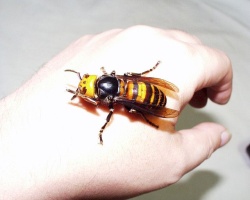Google handles the YouTube hornet


It was bound to happen. It's one thing for content companies to overlook "copyright infringement" when the company involved isn't really making much money from the infringement. YouTube videos weren't exactly high-resolution, and length limitations on individual uploads meant that long episodes had to be broken into pieces. This makes YouTube video poor competition to the higher resolution stuff sold by content companies. I argued awhile ago (when I can't remember) that the content companies would be wise to overlook copyrighted content on YouTube. If anything, the low-res content acts as free marketing for the heavier duty stuff.
That reasoning, however, applied before Google decided to purchase the company. Google is in a better position to make money from the content uploaded to YouTube. They haven't quite worked it out yet, but Google has tapped a gusher of sorts in the marketing space with their ad-supported search service, and I'm sure advertisements would play a role in their attempt to monetize an asset for which they paid $1.65 billion.
Content companies, however, don't like others to make money from their content if they don't get a cut. They would probably still get a boost from the "free advertising" of low-res YouTube content, but Google is likely to make more money from that "throwaway" content than content companies are likely to yield from the "buzz" created by access to low-res content. Hence, the tug-of-war over what content is allowed to be posted on YouTube.
YouTube still has lots of revenue potential. I think the majority of its appeal lies in its library of user generated content, and Google seems to understand that, offering to pay for such content as a means to spur its creation. Even so, Google's experience with YouTube is a bit like catching an asian giant hornet. Asian giant hornets are military-efficient miracles of insect evolution, and catching one would be interesting. The trick, however, is knowing what to do with it once caught. Further, the longer you hold it, the more likely you are to get stung.
A bad move on Google's part, however, would be to start threatening others with the hornet, which appears to be what they are doing with a policy that would offer content companies tools to track down copyrighted content posted to YouTube...if you have a distribution deal with Google. In other words, sign up, or we will look the other way as the locals run amok through your stores.
It's not exactly that bad, as clearly, YouTube content is not exactly high resolution. Even so, the content companies aren't exactly short of lawyers, and Google probably doesn't want to fight a large lawsuit over this. "Fair use" doesn't even enter the equation when we are talking content uploaded to a public web site, however low resolution and irrespective of whether the person doing the uploading has a legally purchased copy.
A few years ago Google might have been able to hide behind the claim that they can't control what people upload to their site. The Supreme Court ruling against Grokster and Streamcast, however, erodes that claim somewhat (though ISPs do have protections, so we'd have to see how the courts would categorize a Google service).
Anyway, I found that scary picture of an insect I do NOT want to catch through Digg.com. According to wikipedia, a queen can reach a length of 2.2 inches. Makes that skit from Conan O'Brien where a guy wears a suit made of chicken wire that protects him from 3-inch bees frighteningly close to reality.